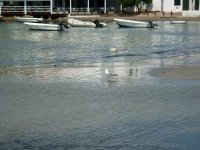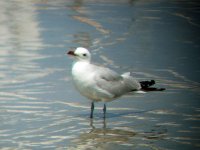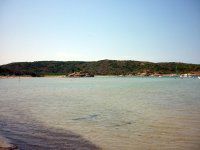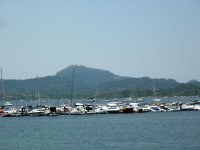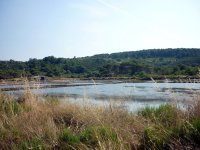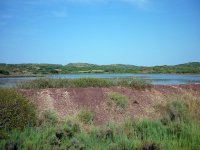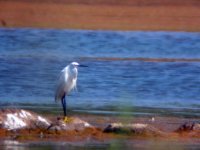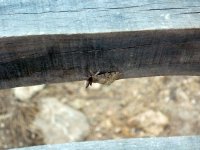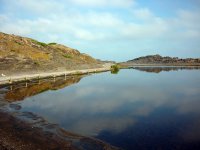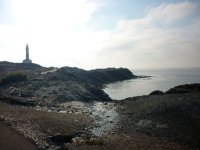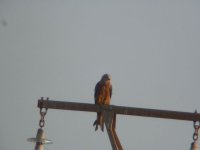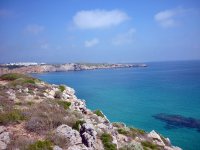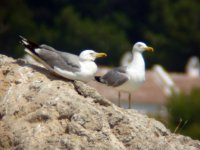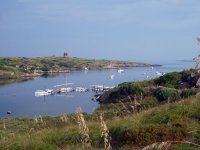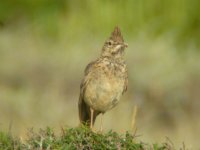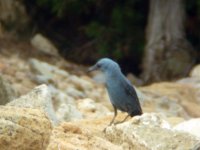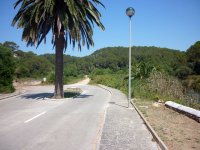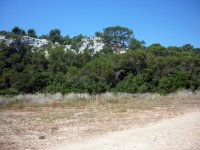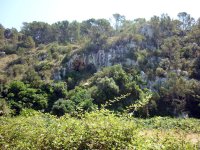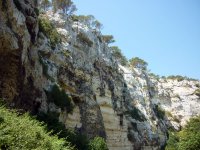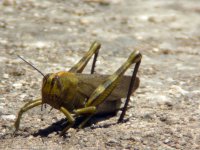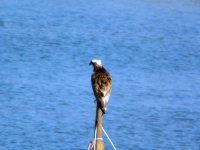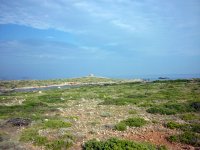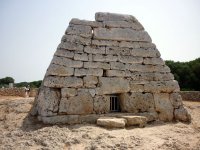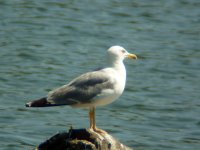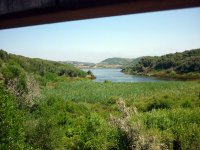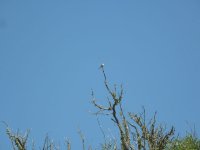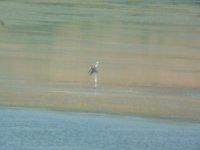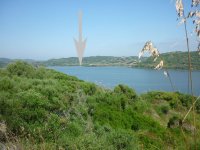This is a report of the holiday I took with my family in Menorca this year between 29 June and 13 July. It wasn’t primarily a birding trip but I managed to get out to a few locations to grab some birding time.
Tuesday 29 June.
The Jet2.com flight from Leeds Bradford was delayed due to a technical fault, not exactly the start we wanted to our holiday but as the original delay was given out as 3 hours we were happy to be airborne by 12.45pm, instead of the scheduled 11.45. After landing and the usual messing about getting the luggage and the hire car sorted, the holiday started for me with the first bird sighting of the trip, sadly nothing exotic, just a humble house sparrow on the outskirts of Mao.
We were staying at Port Addia which is about 20 kilometres north of Mao, not far from Arenal D’En Castell. The room we had was pretty nicely situated from my point of view, a decent long view over the terrain between Addia and Arenal, sadly not the sea view my wife wanted. Having a spotted flycatcher nesting in one of the pines by our room was a bonus as it enlivened our mealtimes watching the parent birds bringing food in to the recently fledged chicks that were clambering about in the pine branches, the parents were getting less and less willing to feed the youngsters and towards the end of the second week were actively repairing the nest site so I think a second brood could be on the way by now.
Wednesday 30 June
A walk down to the harbour at Port Addia mid morning gave decent views of yellow-legged gulls, great tits, turtle and collared doves along with mallard. The weather was so hot that any thought of an afternoon stroll was out of the question until turned 4.00pm. This was more or less the routine we followed for the next 2 weeks, with activity in the morning and then doing nothing until late afternoon.
We had a drive down to Es Grau, the village rather than the nature reserve, here we had a walk along the beach and one of the first birds I saw was a lone Audouin’s gull which was quite happy to allow me to get a photo using my bins, I had not brought the scope along today as this was a family trip not a birding jaunt. More yellow-legged gulls, turtle doves and the first sightings of Sardinian warbler were logged close to the beach.
Tuesday 29 June.
The Jet2.com flight from Leeds Bradford was delayed due to a technical fault, not exactly the start we wanted to our holiday but as the original delay was given out as 3 hours we were happy to be airborne by 12.45pm, instead of the scheduled 11.45. After landing and the usual messing about getting the luggage and the hire car sorted, the holiday started for me with the first bird sighting of the trip, sadly nothing exotic, just a humble house sparrow on the outskirts of Mao.
We were staying at Port Addia which is about 20 kilometres north of Mao, not far from Arenal D’En Castell. The room we had was pretty nicely situated from my point of view, a decent long view over the terrain between Addia and Arenal, sadly not the sea view my wife wanted. Having a spotted flycatcher nesting in one of the pines by our room was a bonus as it enlivened our mealtimes watching the parent birds bringing food in to the recently fledged chicks that were clambering about in the pine branches, the parents were getting less and less willing to feed the youngsters and towards the end of the second week were actively repairing the nest site so I think a second brood could be on the way by now.
Wednesday 30 June
A walk down to the harbour at Port Addia mid morning gave decent views of yellow-legged gulls, great tits, turtle and collared doves along with mallard. The weather was so hot that any thought of an afternoon stroll was out of the question until turned 4.00pm. This was more or less the routine we followed for the next 2 weeks, with activity in the morning and then doing nothing until late afternoon.
We had a drive down to Es Grau, the village rather than the nature reserve, here we had a walk along the beach and one of the first birds I saw was a lone Audouin’s gull which was quite happy to allow me to get a photo using my bins, I had not brought the scope along today as this was a family trip not a birding jaunt. More yellow-legged gulls, turtle doves and the first sightings of Sardinian warbler were logged close to the beach.




